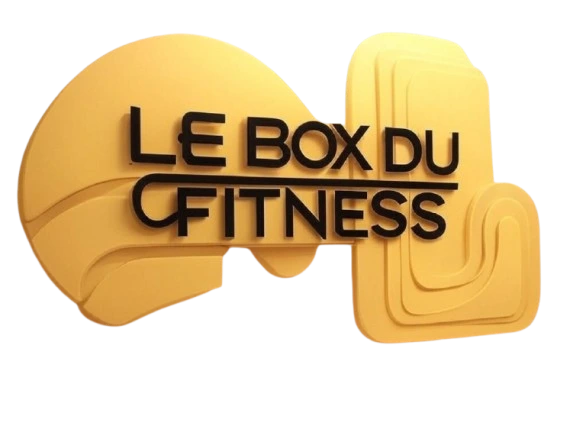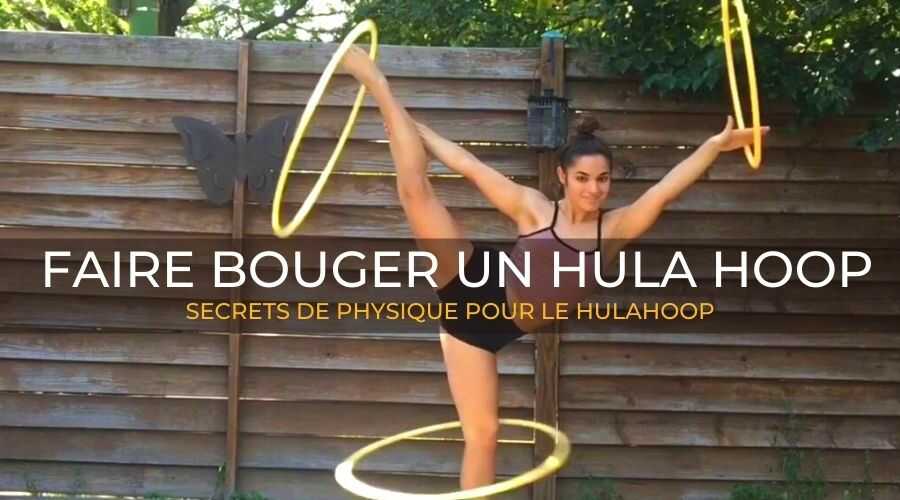Hulahoop Physics Secrets
Have you ever spent time spinning a hula hoop around your waist or arm?
Was it easy for you to do, or was it difficult? Have you ever wondered how hula hoops work , or in other words, what makes them able to spin around a person's waist or arm?
It's a physics question. Physics can help you figure out what makes a hula hoop a winner and another a flop. In this activity, you'll create your own hula hoops and study how their mass affects their rotation.
Which do you think will spin better, a heavy hoop or a lighter hoop?
Get ready to hula hoop and find out!
Fitness Equipment: A tape measure
Polypipe, a hard black pipe usually used for irrigation (5/8, ¾ or 1 inch diameter, about 25 feet long, although it is normally sold in 100-foot rolls).
Available at a garden supply store or home improvement store.
Poly insert fitting or wooden dowel that fits snugly inside the polypipe tube.
For example, if you are using ¾ inch pipe, you will want to use a ¾ inch poly insert fitting.
A PVC cutter (preferred) or utility knife sharp and wide enough to cut the pipe safely.
Hair dryer: A funnel with an opening that can fit into the polypipe or a sheet of thick paper and tape.
- Measuring cup
- Timer or stopwatch
- Wide plastic tape, such as duct tape
- Sand (1 cup)
Optional: A bucket and tape or colored paint for decorating.
Procedure :
-
Measure the height from the floor to a point between the hula hooper's belly button and the middle of his chest. This will be the height (or diameter) of the hula hoop.
-
To determine how much polypipe you need to cut to make your hula hoop, take the number you just measured and multiply it by π (or 3.14). (The circumference of a circle is equal to π times the diameter of the circle.)
-
Measure the length of polypipe needed and have an adult carefully cut the pipe at the correct location using a PVC cutter or a sharp utility knife.
-
Use a poly insert fitting (or wooden dowel) to connect the ends of the pipes to form a circle.
-
If the fit is difficult, use a hair dryer to warm the ends of the pipes (one at a time) for about two minutes before inserting the fitting inside the pipe.
-
Insert the fitting into one end of the tubing until the fitting is half inserted,
-
then insert the other half of the fitting into the other free end of the tubing.
-
Push the pipes together until little (or no) fitting is visible, using the hair dryer to heat the pipes if it is difficult to insert the fitting.
-
Place a short strip of wide plastic tape over the connection where the two ends of the tubing meet.
Do the same to make a second hula hoop of the same size, but this time add a cup of sand to the hula hoop (to increase its mass) before connecting the ends with the poly connector.
To add the sand, use a funnel to carefully pour the sand into the pipe. You can do this over a bucket (and pour all the spilled sand into the tube) and/or have someone help you.
If you don't have a funnel, you can make one by rolling a sheet of thick paper into a cone shape with a hole in the end and securing it with tape.
When you are finished making both hula hoops, hold them in your hands.
How do hula hoops feel about each other?
If you want, you can decorate your hula hoops with colored tape, paint, or whatever comes to mind.
Now you are going to hula hoop with your homemade hula hoops. Take the lightest hula hoop to try it first.
Have one person hula hoop with the hoop around their waist while an assistant begins timing the hula hooper as soon as they reach a steady rhythm.
Ask the assistant to time the person for one minute and count the number of complete revolutions the hoop makes during that time.
If the person cannot complete a full minute with the hoop, start over or try collecting data for only 30 seconds.
How many times can the kite spin the lighter hoop in one minute?
How well can the hula hooper spin it? Does it look awkward or does it spin well?
Repeat this process with the heaviest hula hoop, again timing how many times the hula hooper can complete in one minute. Be sure that the kite flyer does not change clothes while data is being collected.
Did the kite spin the heavier hoop faster or slower than the lighter one? Why do you think this is? Was this hoop harder or easier to spin, or about the same as the other hoop?
If you like, you can repeat this process a few more times for each hula hoop. Are your results consistent?
If desired, the hula hooper and assistant can swap roles and repeat this process for both hula hoops.
Did the other person get similar results? What happened?
The hula hoop with sand added should clearly feel heavier than the hula hoop without sand. Because of its greater mass, the heavier hoop was pulled downward more than the lighter hoop as they spun through the air.
The hula hooper probably felt like he had to exert more effort to keep the heavier hoop in the air and spinning, and it may have even been difficult to hold it around his waist for more than 30 seconds.
Indeed, when the same force, or thrust, applied to a lighter object is applied to a more massive object, this force causes the more massive object to change its motion less.
Therefore, more effort is required to spin the heavier hoop. The heavier hoop probably spun much slower than the lighter hoop.
For example, one of our hula hoopers recorded 60-70 RPM for the heaviest hoop, compared to 100-120 RPM for the lightest hoop, although there can be a lot of variability depending on the hula hooper and hoops.
Digging deeper into the issue
What makes a hula hoop spin around a person's waist?
It is a combination of several forces at play. When the person inside the hoop moves their body to propel the hoop around them, they exert an upward force (from their hips) and a rotational force called torque.
Torque is an outward twisting force that is essentially needed to keep the hoop spinning. (More technically, torque is needed to keep the hoop spinning, because it is needed to keep the centripetal force acting.)
Another force involved in the hula hooping process is friction. For example, if a ball is rolling on a flat surface, it will eventually stop due to friction.
The friction between the hoop, the hula hooper's clothing, and the air will slow down the rotation of the hoop. However, the friction also helps to keep the hula hoop on the hula hooper's body while the force of the hula hoop's mass pulls it downward (this downward force is due to gravity).
The heavier (massive) the hula hoop, the greater the downward force and the more work you have to do to spin it.
For further exploration
In this activity, you compared hula hoops of the same size but different masses. You can repeat this activity, but this time make hula hoops of different sizes.
Tip: The smallest hula hoop you would want to make would have a diameter that goes up to the hula hooper's belly button, and the largest would have a diameter that goes up to the middle of their chest.
How does the size of the hula hoop affect the way it spins?
You could make a wider variety of hoops, for example by adding different amounts of sand and/or making several different sizes.
Is there a relationship between speed and mass or size of the hula hoop? If so, what is the relationship?
Try hula hooping with different types of clothing. Do different types of clothing affect the speed of the hula hoop? Can you correlate your results with the friction force?
How to choose a hula hoop?
CHOOSING THE RIGHT SIZE HULA HOOP FOR YOU.
Weighted hula hoops and lightweight hula hoops are both great for different people and different goals. But which hula hoop is right for you?
The most common problem beginners have is choosing the right size hula hoop for their particular use.
If you are a beginner looking for a hoop for yourself or someone else, adult or child, this hoop selector will lead you to the most perfect hoop for you!
After over a decade of handcrafting thousands of hula hoops, I've created the ultimate hula hoop buying guide for you to choose the right size hula hoop with the right weight.
IN 3 EASY STEPS, I'LL GUIDE YOU THROUGH THE PROCESS OF SELECTING YOUR HULA HOOP TO ENSURE YOU PUT IT ON WITH ACCURACY, POWER, AND EASE.
Step 1 - Start with your height - what is your waist and clothing size?
Step 2 - Match your body size to your hoop size as shown in the diagram below.
Step 3 – Is this hoop for your body, your arms or both?
ADULT WEIGHTED HOOPS FOR BODY HOOPING
*TIP FOR BEGINNERS: THE BIGGER THE HOOP, THE EASIER IT IS TO SPIN!
LIGHTWEIGHT HOOPS FOR ADULTS / CHILDREN FOR BODY + OUT OF BODY (ARMS + HANDS)
*Lightweight hoops are great for arms and hands! See hula hoop styles and weights below.
NEW EASY HOOPS FOR KIDS AND ADULTS CURRENTLY AVAILABLE IN ALL SIZES HERE
FIND THE HOOP THAT'S RIGHT FOR YOU
The best hula hoop for you is the one you connect with - this is determined by size, weight and practice.
For beginners, the general rule is:
- Large weighted hula hoops are best for waist hooping;
- Small, lightweight hula hoops are more suitable for learning hand-held hula hoop tricks and arm hooping.
- Choosing the right size and weight for your hula hoop is important for a successful hooping experience!
STEP 1 - START WITH YOUR SIZE
LARGE SIZE: ADULTS OVER 177CM (5FT, 8") OR WHO WEAR LARGE OR EXTRA LARGE SIZE CLOTHING.
108cm (42")
Weighted Fitness Hoop (500gm/1.1lb) | Hoop (500gm/1.1lb)
AVERAGE SIZE: ADULTS BETWEEN 167CM-176 (5FT.5"-5FT7") | CLOTHING SIZE - AVERAGE.
100cm (39")
PolyPro Weighted Hoops (365gm/0.8lb) | Weighted Dance Hoops (450gm/0.99lb) | Glam Hoop (450gm/0.99lb)
STEP 2 - MATCH YOUR BODY SIZE TO THE HOOP SIZE
Your body-hugging hula hoop should measure vertically from the floor to roughly your belly button or the top of your hip bone.
If you have a large size, you will need a slightly larger hoop. If you have a smaller size, you will need a slightly smaller hoop.
The larger and heavier the hoop, the slower it spins, giving you more time to connect with it on your waist.
As hoops decrease in size, they become more challenging on the body with their faster rotation.
While a small, lightweight hoop isn't ideal for waist hooping, it will be your best friend when learning hand and arm hula hoop tricks.
STEP 3 - IS THIS HOOP FOR YOUR BODY, YOUR ARMS OR BOTH?
Say hello to your hoop collection!
Hand hooping is easy, but it takes practice, which means getting your delicate hands spinning. Take the strain off weighted hoops with our smart hoops.
BEST HULA HOOPS FOR ADULT BEGINNERS
For complete beginners who want to learn both body and hand-held hula hoop tricks, I recommend the untaped weighted hula hoops or the taped adult weighted hula hoops in our Dance Hoop or Fitness Hoop options.
Q. What is the difference between untaped Weighted Hula Hoops and taped weighted hula hoops?
A. All of our hula hoops (except our LED hoop) are made from polypro tubing. Some hoops are decorated with tape, which adds weight.
The main differences between decorated and undecorated hoops are price, weight, and bling factor.
A hoop with tape is more flashy and has a better grip. Since tape makes the hoop heavier and all of our weighted hoops have tape, weighted dance or fitness hoops are wonderful for learning to hoop at the waist with all the sparkle and shine, but they can get heavy in the hands.
Most people who practice hula hooping prefer to have a selection of hula hoops to choose from for different types of hooping.
Learning hand and arm hula hoop tricks is best done with ribbon-free polypro hula hoops, using either weighted polypro hula hoops or lightweight polypro hula hoops, called Featherlights.
EXPERT'S CHOICE: WHAT DO WE RECOMMEND?
Your starting hoop is a weighted, ribbon-free Easy Hoops Hula Hoop for average body sizes, with hooping primarily on the body and some in the hands.
You will find your body size guide above under "Get Started with Your Body Size".
Weighted Hula Hoops (No Band) - Your Favorite Workout Hoops.
Can you lose weight with a weighted hula hoop?
How Weighted Hula Hooping Can Help You Lose Weight, Tone Your Abs, and Burn Calories.
You may remember hula hooping as a fun activity you did as a kid.
However, hula hooping isn't necessarily just for kids; it can also serve as a low-impact workout that can help you burn calories and lose weight.
Additionally, a weighted hula hoop can add resistance and intensify your workout. If you're looking for a fun change to your cardio routine, trying an exercise like hula hooping can help you reach your workout goals.
What the research says: According to a 2015 study, you're more likely to stick with a weight-loss routine if it's fun, and also more likely to lose weight.
The study found that people who undertook rigorous, less fun workouts were more likely to overestimate the number of calories they had burned and reward themselves with dessert and indulgent snacks afterwards, which can make weight loss more difficult.
If you're interested in hula hooping, it shouldn't be too difficult to get started, as it's affordable, easy to do at home, and portable.
Here are some of the benefits of hula hooping and how you can get started.
Benefits of Using a Weighted Hula Hoop
- Burns Calories: According to a small study of 16 participants, a 30-minute hula hoop session can help you burn up to 210 calories.
A vigorous hula hoop session is comparable to cardio kickboxing, step aerobics or a boot camp session in terms of heart rate and calorie burn.
- Helps you lose weight: Hula hooping can help you lose weight, if you combine it with a healthy eating strategy that works for you and regular strength training.
- Builds Aerobic Fitness: Hula hooping is a form of cardio exercise, also called aerobic exercise, that gets your heart pumping. "You need to do at least 150 minutes of moderate cardiovascular exercise per week to see the benefits.
Some of the benefits of cardio include improved endurance, more energy, weight loss, improved mood, and better overall health."
- Tone your abs and “love handles”: Hula hooping can tone your core and postural muscles (i.e. the muscles that keep you upright and help with your posture).
-
Improves Balance: Hula hooping can also help you improve your balance. Balance training is often overlooked; however, it is essential for stability and can help prevent injuries from falls, especially as we age.
- It's a fun workout: "Hula hooping is really enjoyable and when the workout is something you enjoy doing, you're much more likely to stick with it."
We've spent a lot of time bringing you the most comprehensive article on the force that moves a hula hoop, we hope you enjoyed learning about it.
Do not hesitate to subscribe to the private club, you will also receive our complete book as a gift on the best way to structure your fitness training, you will receive an email in advance when an article appears on our site leboxdufitness.com
Also feel free to check out our store which offers the best fitness, bodybuilding and fitness equipment.
Did you like this article and it helped you learn about the forces that move a hula hoop? Let me know in the comments if you already knew about these concepts and what your experience is on the subject.
If you want to find other Fitness and Well-being articles, take a look at the fitness coaching and leg exercises sections of the blog, you will find plenty of workouts and exercises to do at home.
And if you want to know more about sports nutrition (food supplement) to gain muscle or lose fat, do not hesitate to consult the fitness accessory collection .
You can download my complete fitness guide “ The essentials for a body in top shape ” for free and subscribe to our Facebook page and our Instagram account .
Thank you for reading, I am personally responding to the comment.
Looking forward to corresponding with you!


















